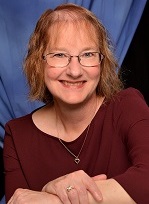“In the kNOW” for this month will focus on the Norwood, Glenn, and Fontan procedures. These three procedures treat a birth defect known as hypoplastic left heart syndrome (HLHS). When newborns have HLHS, their left ventricle is very small and cannot pump blood to the infant’s body like it should. Also, the aorta is smaller than normal. Newborns will require surgical correction of the HLHS within the first days/weeks of life. With a series of staged procedures, the Norwood, the Glenn, and the Fontan, the surgeon will redirect the vascular circuitry to bypass the left hypoplastic ventricle.
The first procedure in the series is the Norwood. To begin a Norwood procedure, the pericardium is opened after a sternotomy and thymectomy are done. A surgeon will then create an enlarged aorta using the bottom section of the pulmonary artery allowing blood to flow from the right ventricle out to the body. Then a shunt must be utilized to route blood from the heart to the lungs since the pulmonary artery was used to enlarge the aorta.
Two different types of shunts may be used. The first is a Blaylock-Taussig-Thomas shunt. This shunt will take blood from the aorta to the lungs. The second type of shunt is a Sano shunt. This shunt routes blood from the right ventricle to the pulmonary artery where it then flows into the lungs.
Source: http://www.severinbrenny.com/sano_shunt_procedure.html
The next component
of the Norwood procedure is the closing of the patient ductus arteriosus
(PDA). Prior to this surgery, the PDA
was necessary so blood could move from the right ventricle to the body. With the aorta having been enlarged, more
blood can flow from the right ventricle out to the rest of the body so the PDA
can be closed.
Newborns will often have an atrial septal defect as well. As part of the Norwood procedure, the atrial septal defect is enlarged which allows more oxygenated blood to return to the right ventricle where it will be pumped out to the body.
As you may have guessed from the description of the Norwood procedure, this procedure is actually a Bypass as a new pathway is being constructed for blood flow. Additionally, a Supplement procedure will capture the graft to the aorta. A Second Quarter 2023 Coding Clinic states there is no need to code for the thymectomy done with a Norwood procedure. The rationale for that is because the sternotomy and thymectomy are done for access to the heart. They do not have a distinct surgical objective and should not be separately coded.
Four to six months post-Norwood procedure, the second procedure, the Glenn procedure, is performed. The purpose of this procedure is to reroute blood from the upper part of the body directly to the lungs. This, in turn, reduces the workload of the right ventricle. Essentially, the superior vena cava is disconnected and reattached to the pulmonary artery. The shunt that was placed during the Norwood procedure will be removed at this point since it is no longer necessary.
The final procedure usually takes place between 18-36 months of age and is called the Fontan procedure. Again, a rerouting takes place by disconnecting the inferior vena cava and using a conduit reattach it to the pulmonary artery which directs blood flow from the lower body directly to the lungs. A fenestration is made between the conduit and the right atrium to prevent too much blood from flowing directly to the lungs.Now you are In the kNOW!!
Dianna Foley, RHIA, CHPS, CCS, CDIP, is an HIM professional with over 25 years of experience. She earned her bachelor’s degree from the University of Cincinnati and holds RHIA, CHPS, CDIP, and CCS certifications from AHIMA, along with being an AHIMA-approved ICD-10-CM/PCS trainer. Dianna has held many positions in HIM and is now an independent coding consultant. She previously served as the program director for Medical Coding and HIT at Eastern Gateway Community College. Dianna is an AHIMA-published author and has volunteered with AHIMA on projects including certification item writing, certification exam development, coding rapid design, and most recently has served on AHIMA’s nominating committee. She is a presenter on coding topics at the national, state, and regional levels and serves as OHIMA’s Education Coordinator. Dianna mentors new AHIMA members and also provides monthly educational lectures to coders and clinical documentation specialists.



